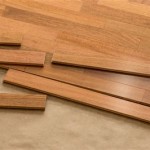A door transition is an important element of any room. It is the piece of flooring that connects two separate flooring materials, like carpet and vinyl, for example. It provides a smooth transition between two different heights, colors, and textures of flooring, making a room look more uniform and finished. Vinyl floor door transitions are used to bridge the gap between two separate flooring materials, creating a neat and seamless transition.
Types of Vinyl Floor Door Transitions
Vinyl floor door transitions come in a variety of styles, colors, and textures. Some of the most popular types of vinyl floor door transitions include:
- T-Molding: This transition is designed to bridge two materials that are of the same height. It comes in a variety of colors to blend in with the two flooring materials, making it look more natural.
- Reducer: This type of transition is used to bridge the gap between two materials that are of different heights. It looks like a ramp and creates a smooth transition.
- End Molding: This type of transition is used to bridge the gap between two materials that are not of the same height. It is usually used to transition between two different materials, such as carpet and vinyl.
- Stair Nose: This type of transition is used to bridge the gap between two materials that are of different heights, such as carpet on the stairs and vinyl on the landing.
Benefits of Vinyl Floor Door Transitions
Vinyl floor door transitions are a great choice for a number of reasons, including:
- Durability: Vinyl is a very durable material, making it a great choice for flooring transitions. It is also easy to clean and maintain.
- Style: Vinyl floor door transitions come in a variety of styles, colors, and textures, so you can find one to match the look of your room.
- Versatility: Vinyl floor door transitions can be used to bridge the gap between two different materials, making them a great choice for any room in your home.
- Cost-Effectiveness: Vinyl floor door transitions are relatively inexpensive, making them a great choice for those looking to save money.
How to Install Vinyl Floor Door Transitions
Installing vinyl floor door transitions is a straightforward process that can be done by most DIYers. Here are the basic steps for installing a vinyl floor door transition:
- Measure the gap between the two flooring materials to determine the size of transition you will need.
- Cut your transition to the desired size using a miter saw.
- Apply construction adhesive to the back of the transition and place it in the gap between the two materials.
- Secure the transition in place by nailing it down with a hammer and nails.
- Wipe away any excess construction adhesive.
- Allow the transition to dry completely before walking on it.
Maintaining Vinyl Floor Door Transitions
Vinyl floor door transitions are fairly low-maintenance and can last for years with proper care. To keep your vinyl floor door transitions looking their best, you should:
- Sweep or vacuum regularly to remove dirt and debris.
- Mop with a mild soap and warm water, then dry with a soft cloth.
- Clean up any spills immediately to prevent staining.
- Check for loose nails or screws and tighten them if necessary.
Conclusion
Vinyl floor door transitions are a great way to bridge the gap between two different flooring materials, making a room look more uniform and finished. They come in a variety of styles, colors, and textures, allowing you to find one that will match the look of your room perfectly. They are also easy to install and maintain, making them a great choice for any room in your home.















Related Posts








